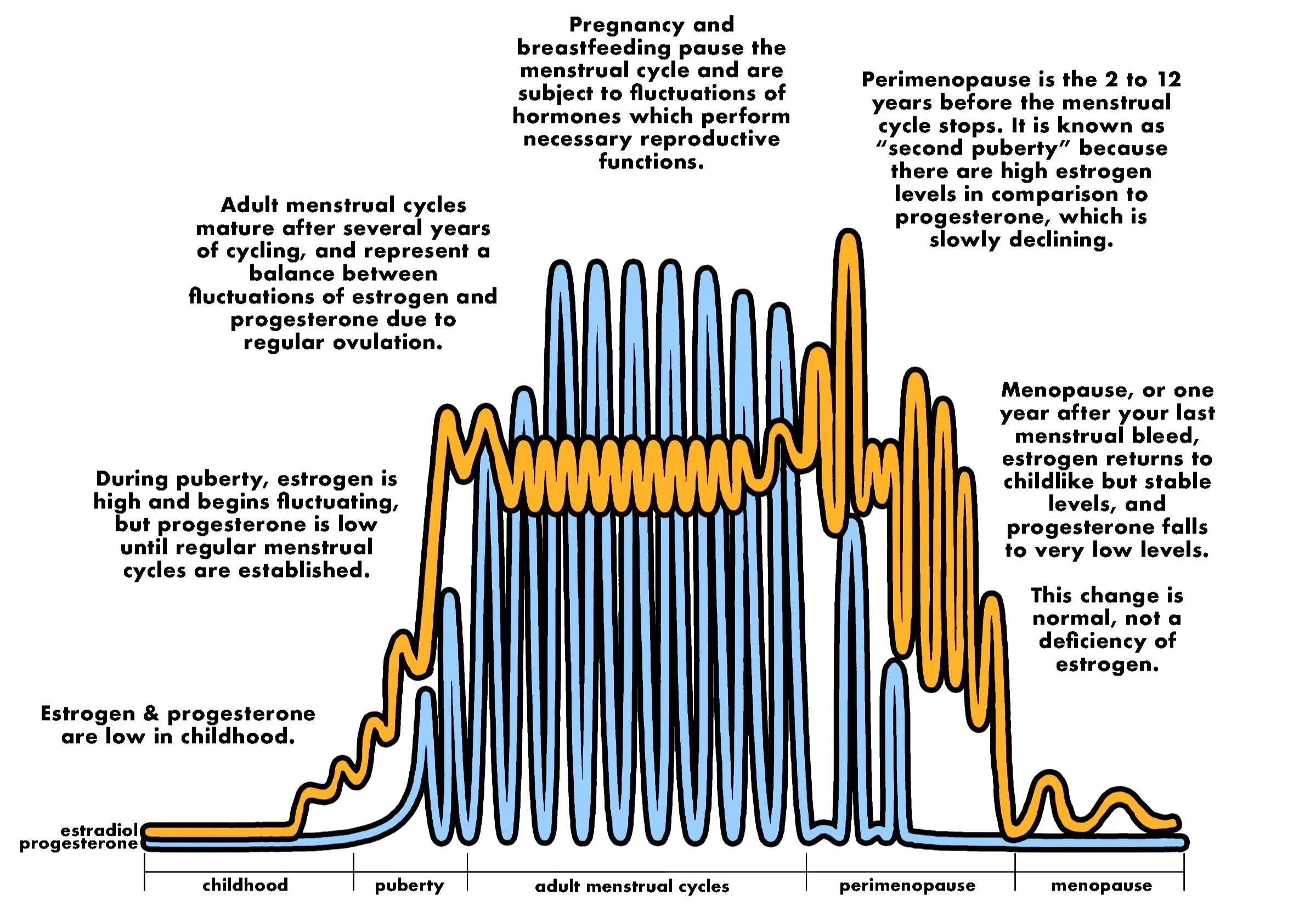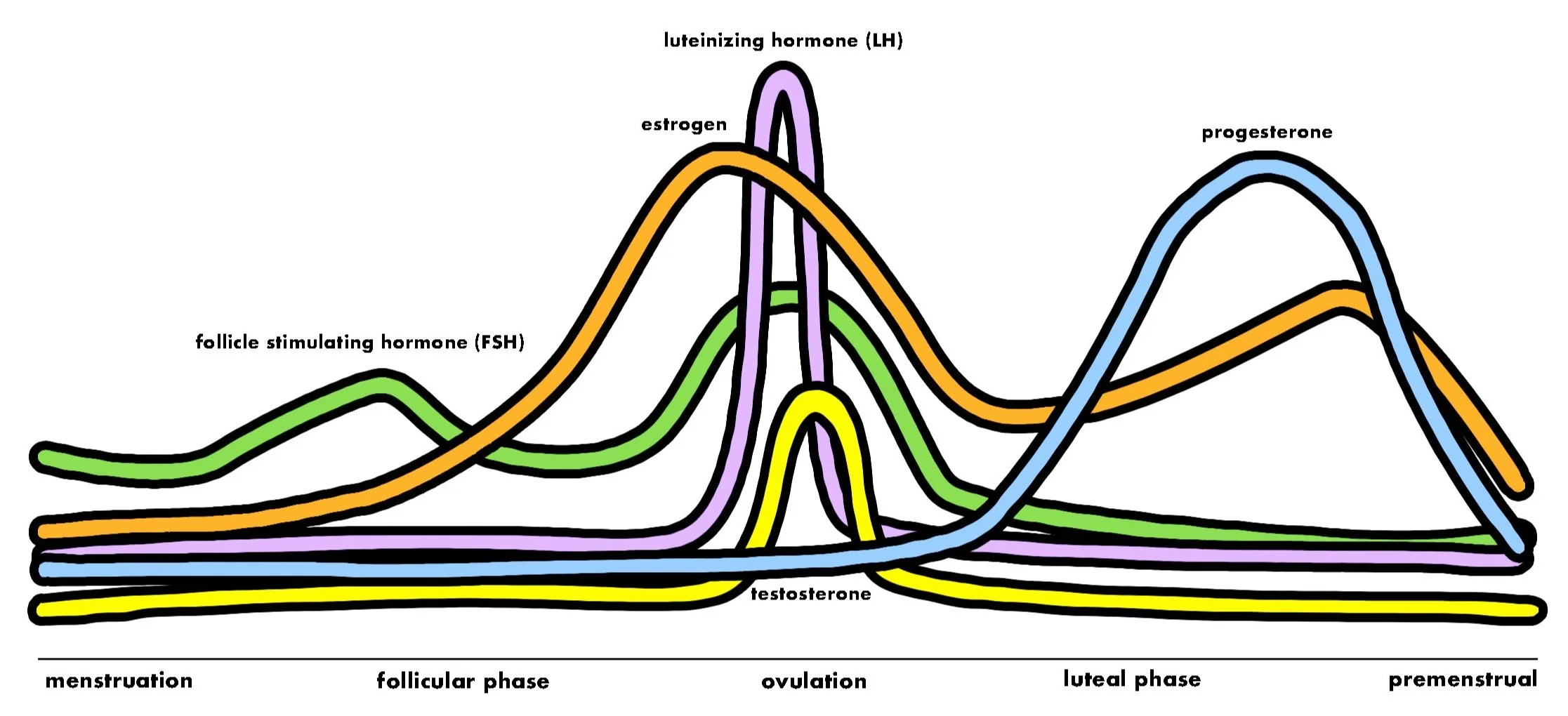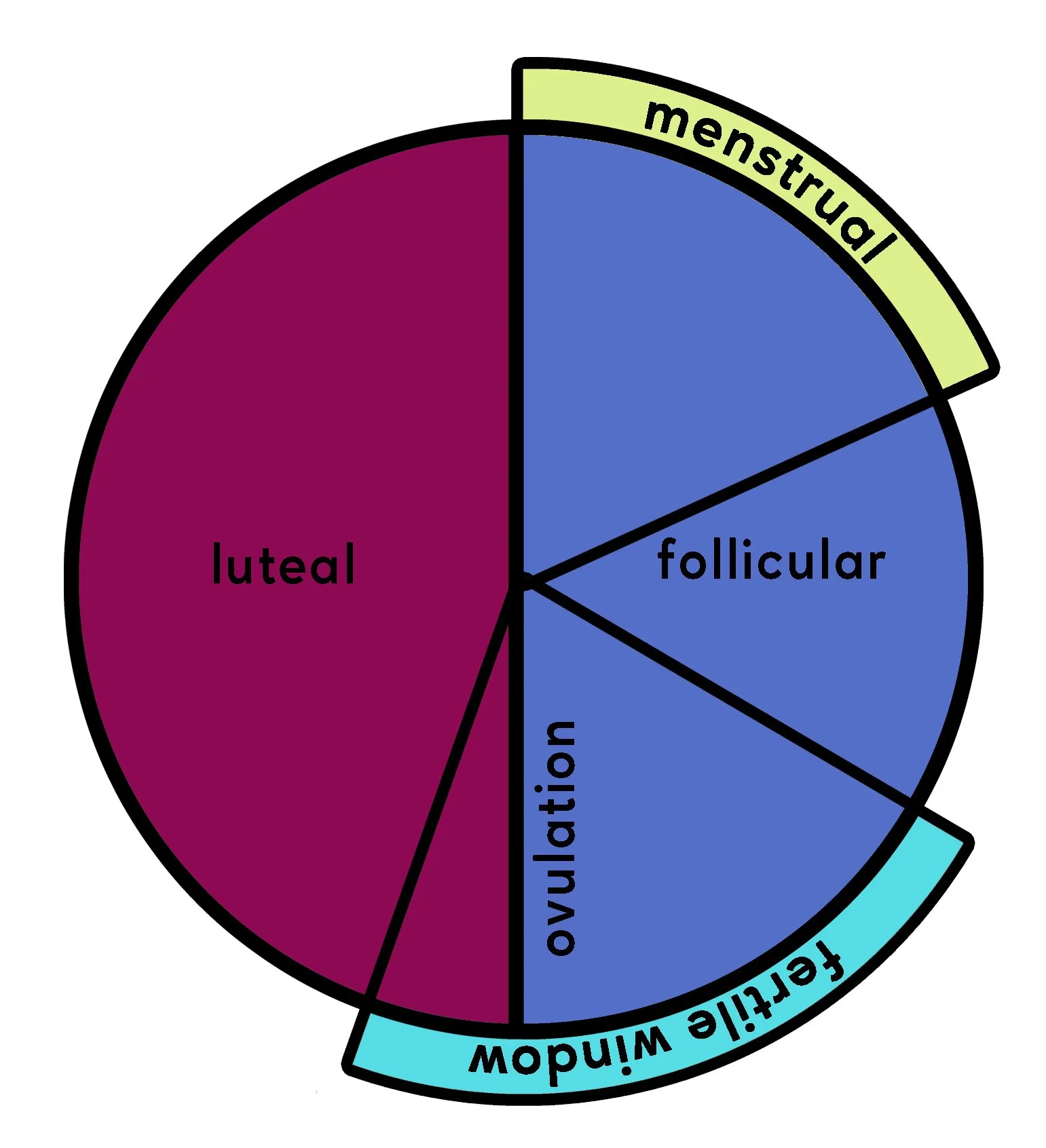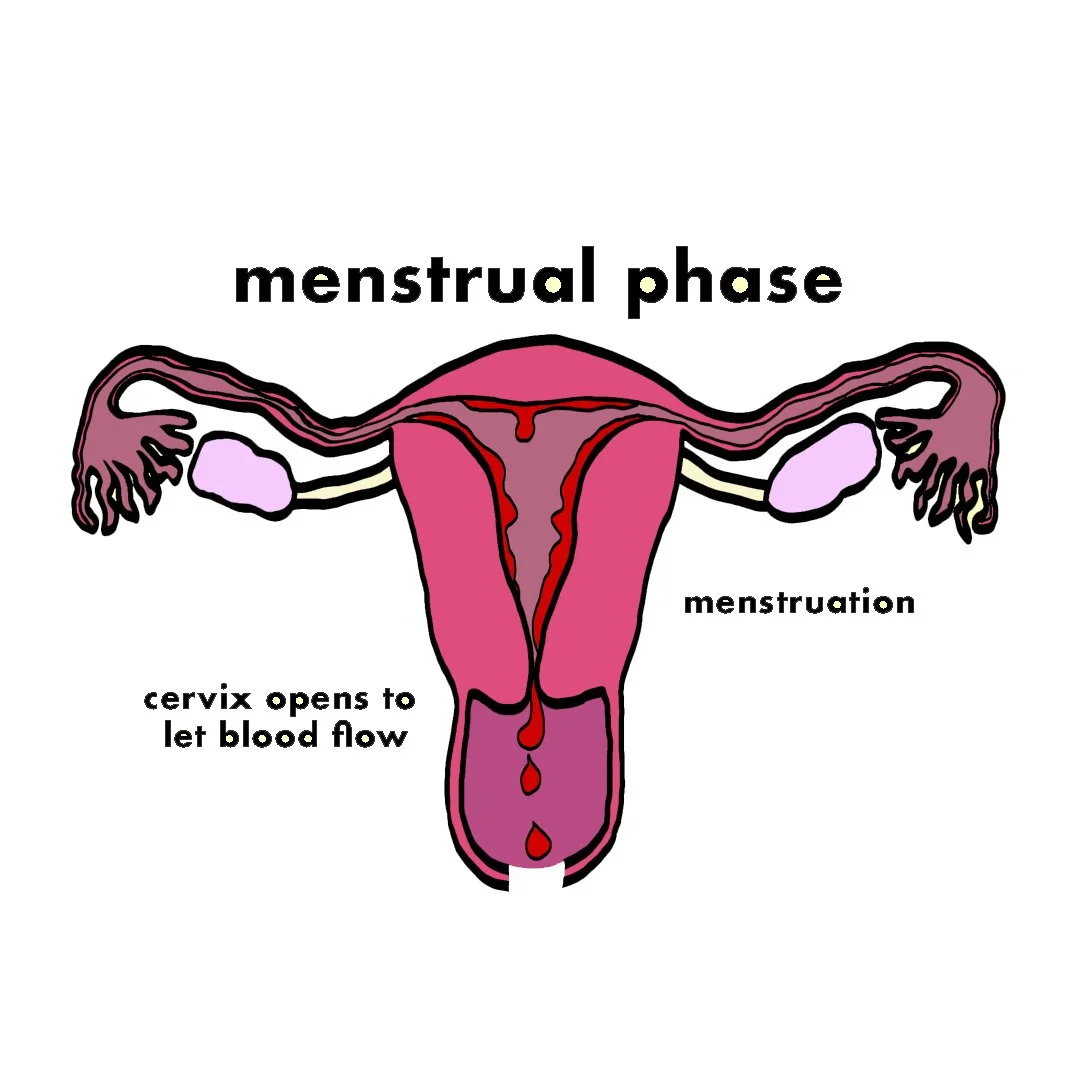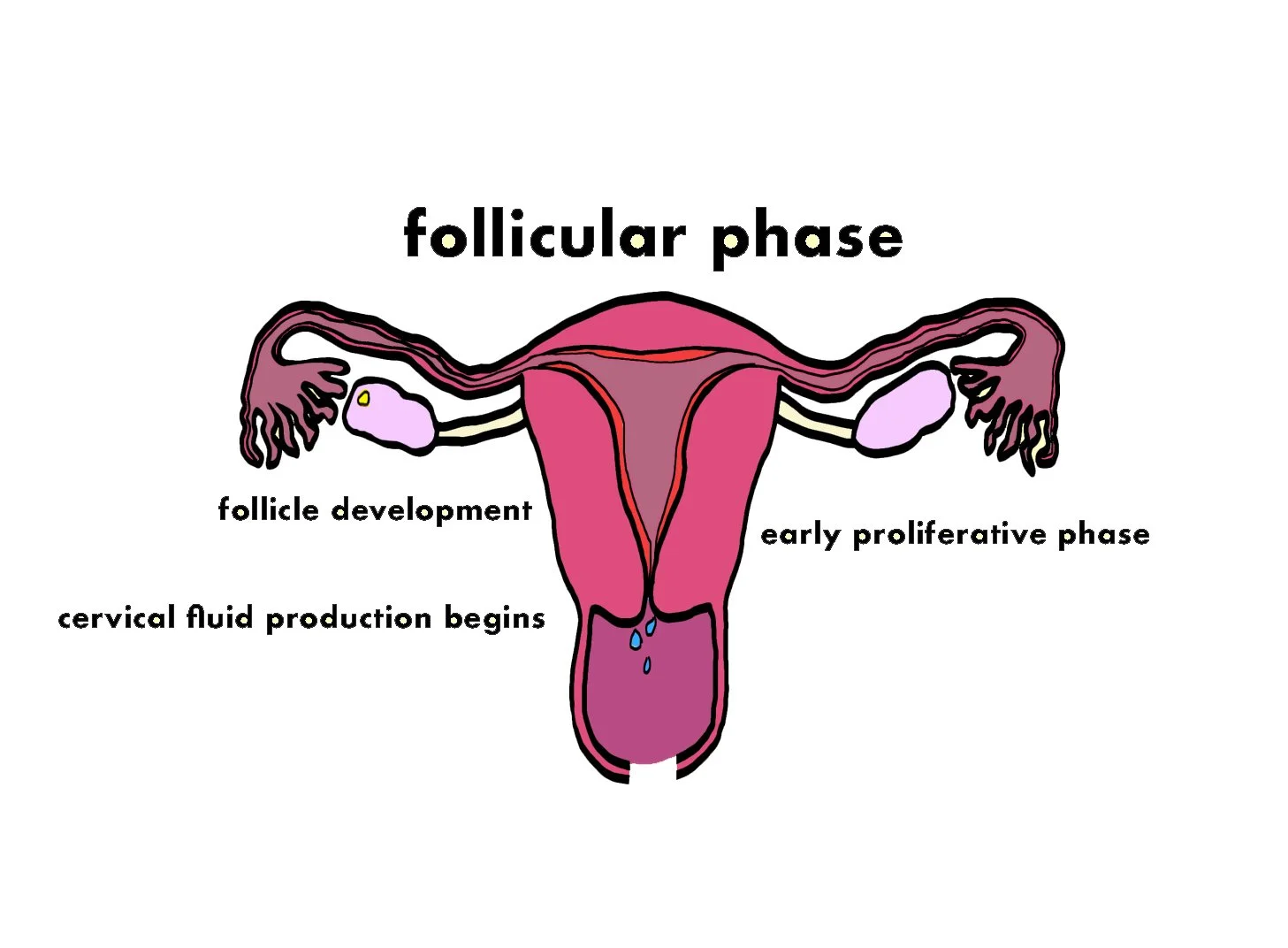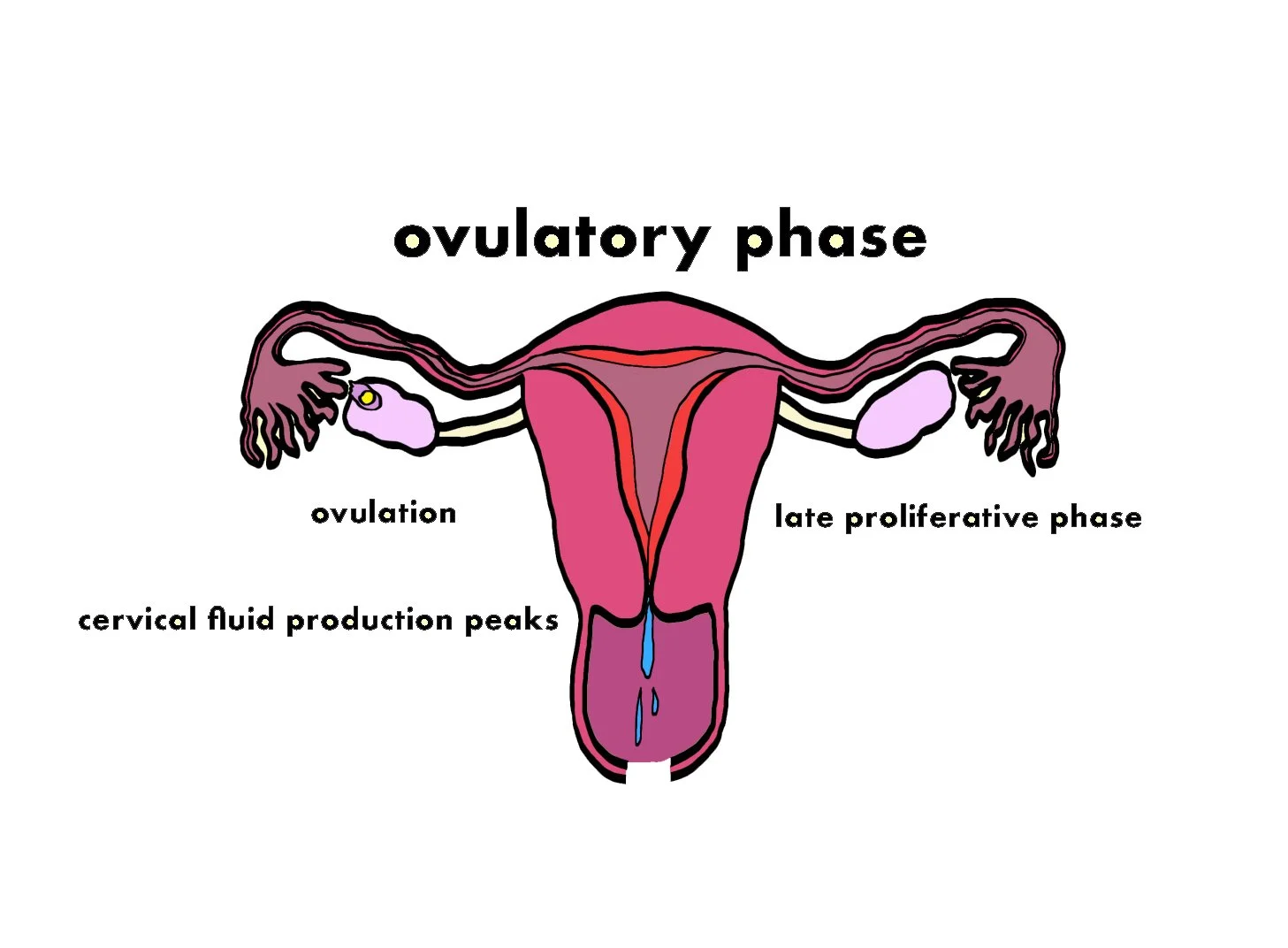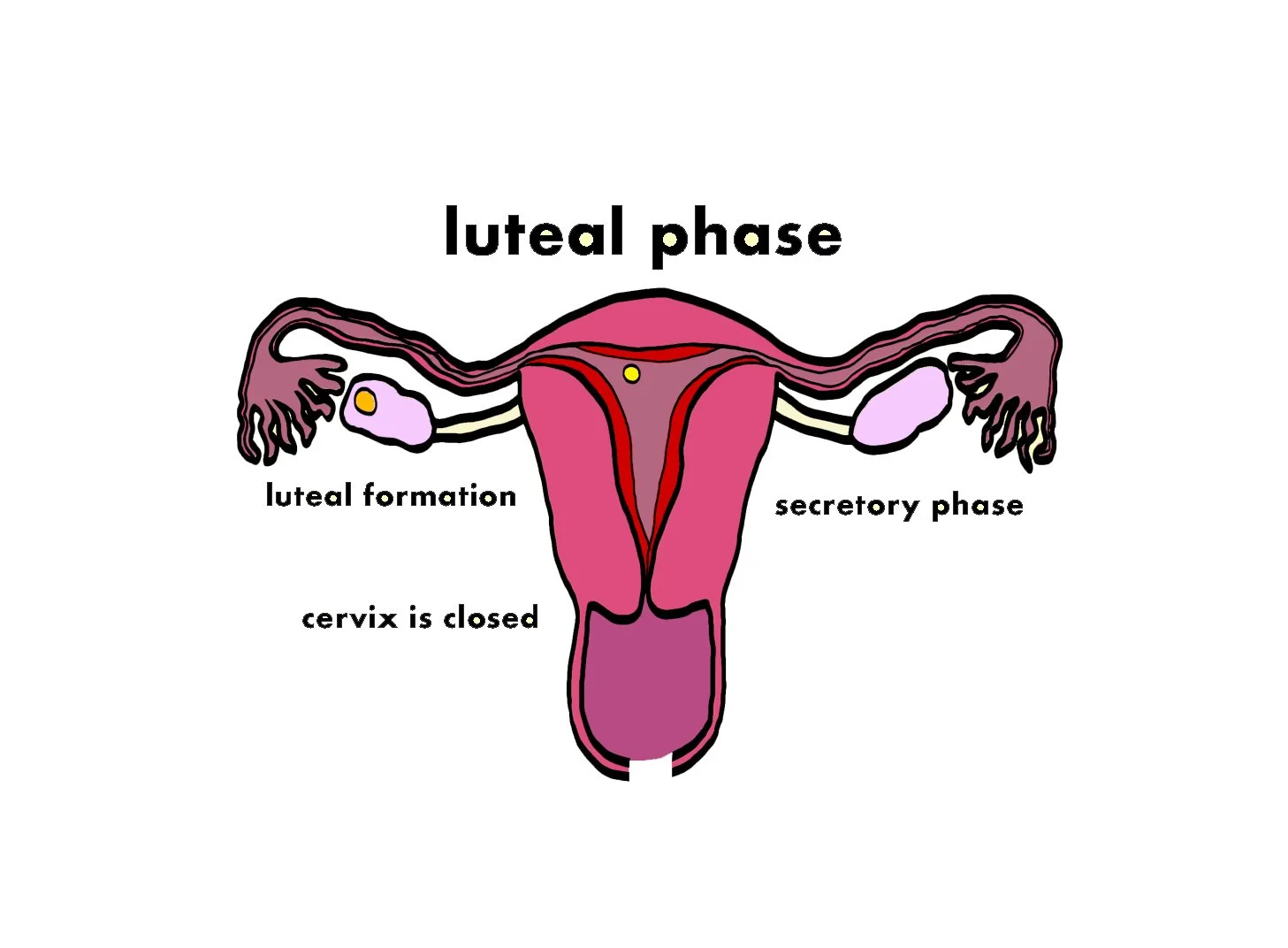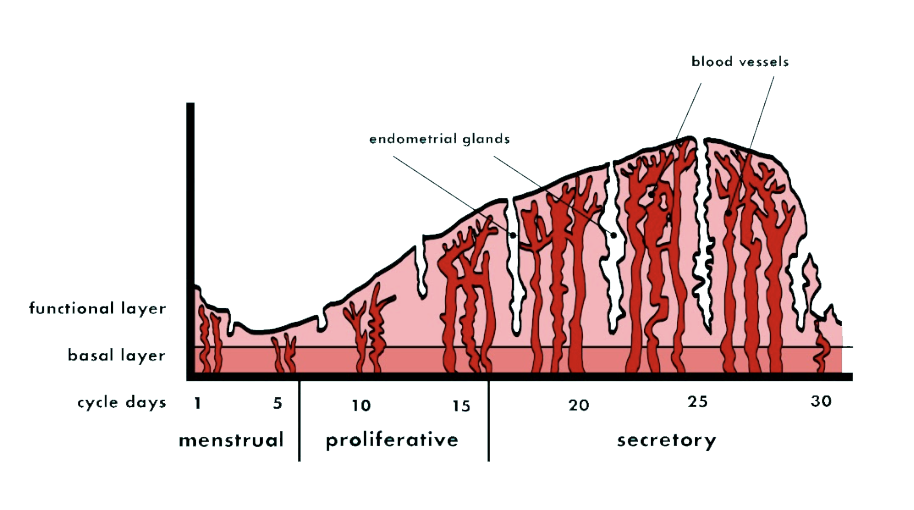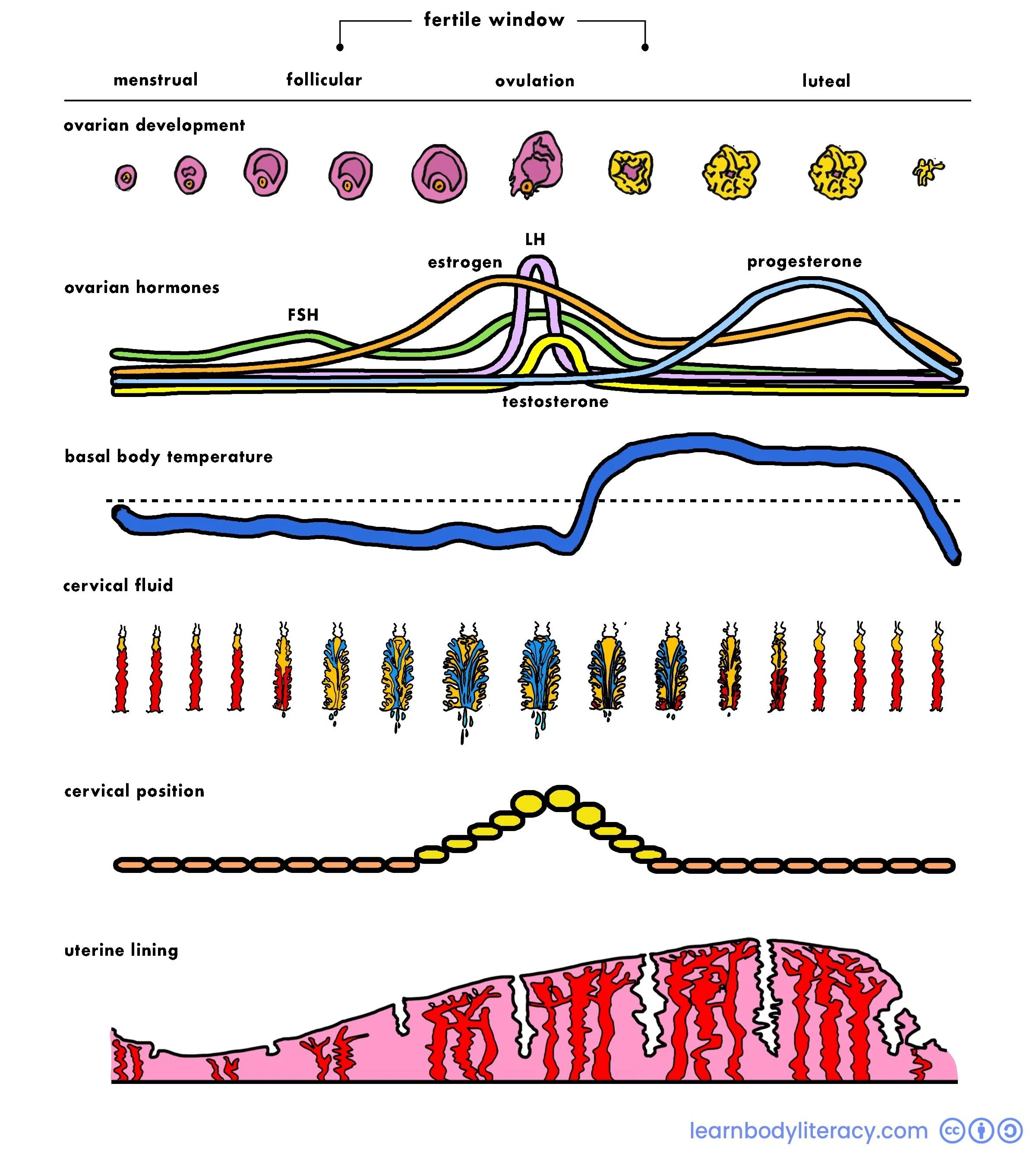The Menstruating Years
The menstrual cycle is a vital sign.
It’s how we make hormones, and this provides short and long term health benefits. Each cycle is like an investment in the peri/menopausal years, when you stop making these hormones.
During pregnancy, the menstrual cycle pauses and your body makes estrogen and progesterone in higher amounts. Breastfeeding temporarily pauses the cycle hormones.
The Menstrual Life Cycle
The menstrual cycle is a series of hormonal events that represent communication between the brain and the reproductive system
the result of these hormonal changes is the physical event of ovulation, the release of the egg
the two halves of the menstrual cycle are called the follicular and luteal phase
each menstrual cycle begins with the menstrual bleed, cycle day 1
during the follicular phase, estrogen is rising
pregnancy is only possible during the fertile window, the 6 days leading up to and including ovulation
ovulation divides the two phases
testosterone is highest around ovulation
after ovulation, during the luteal phase, the body makes progesterone
The Four Phases of The Menstrual Cycle
Ovulation Begins In The Brain
The communication between the brain and the ovaries is called the Hypothalamus-Pituitary-Ovarian-Axis
The process begins in the hypothalamus, where gonadotropin releasing hormone (GnRH) stimulates the anterior pituitary gland
The pituitary releases a hormone called follicle stimulating hormone, or FSH, causing FSH levels to rise.
The Ovarian Cycle
High levels of FSH tell the developing ovarian follicles to secrete estrogen
Estrogen rising makes FSH levels fall
Back in the brain, low FSH tells the hypothalamus - pituitary to release luteinizing hormone (LH)
LH causes the mature follicle to burst open & the egg is released! This is ovulation.
After ovulation, the follicle (fluid sac that held the egg) inverts on itself, creating the corpus luteum, releasing progesterone
Progesterone inhibits FSH & LH - telling the HPA to stop releasing them & preventing the event of ovulation from occurring again in the same cycle
2 weeks later, If the egg is unfertilized, the corpus luteum degenerates, progesterone falls, and the menstrual cycle concludes with the bleed.
The Uterine Cycle
The uterine lining (endometrium) undergoes major changes during the cycle
The uterine cycle has 3 phases
Menstrual: The menstrual bleed is the detachment of the uterine lining
Proliferative: Each cycle you make new lining when estrogen starts to rise. The uterine glands start out small and sporadic looking, growing thicker and the glands becoming more coiled as estrogen peaks
Secretory: At ovulation and afterwards as progesterone rises, the glands become more coiled and the lining reaches its maximum thickness. This creates the ideal environment for a fertilized egg to implant into, which is necessary for pregnancy
Putting It All Together
<< Return to menarche
Next to pregnancy & postpartum >>

